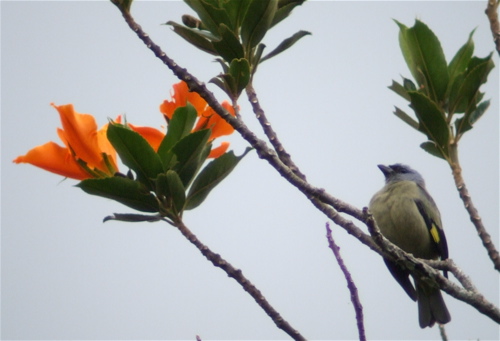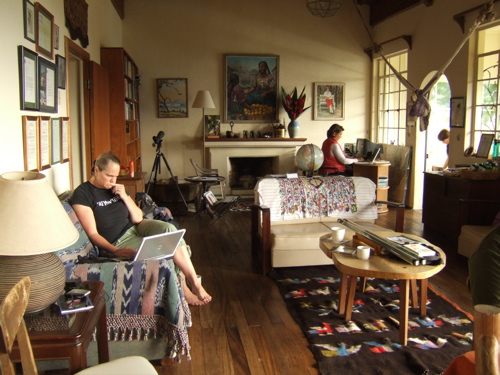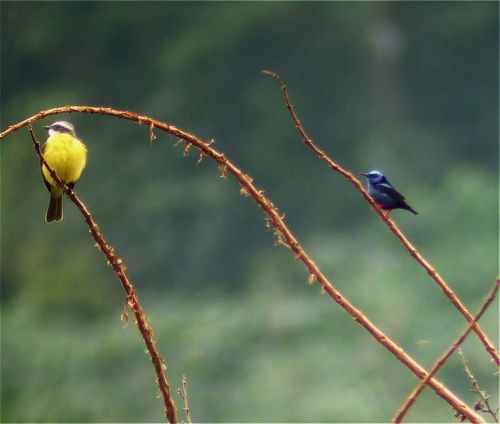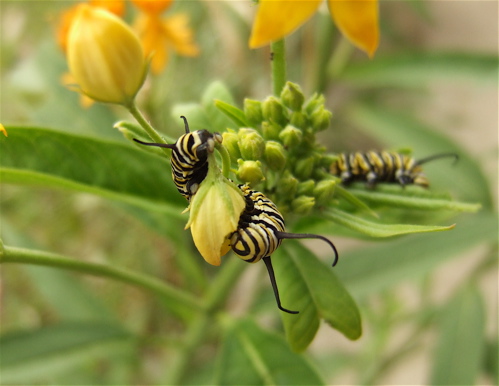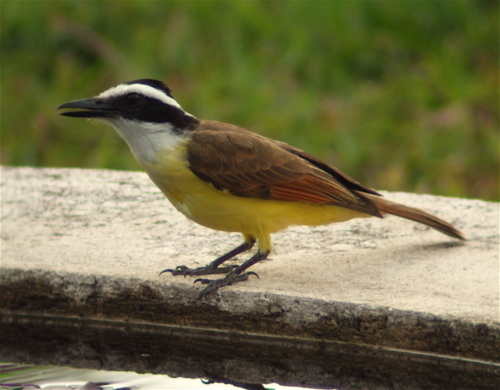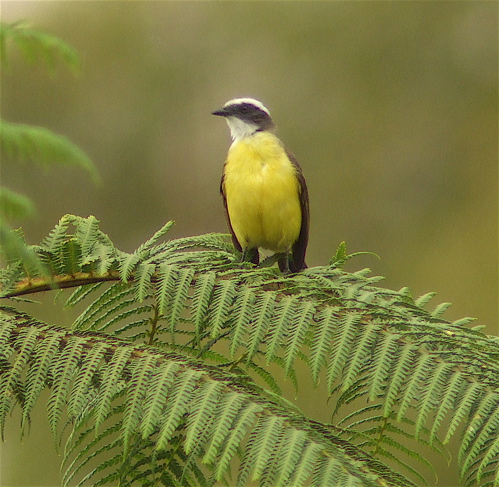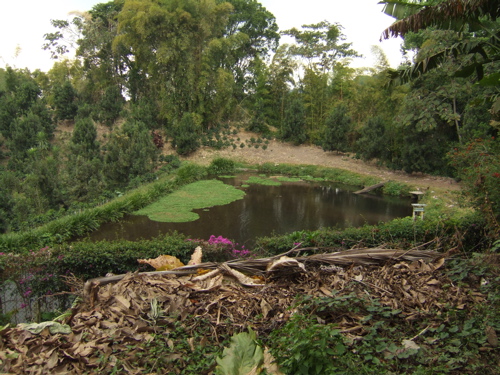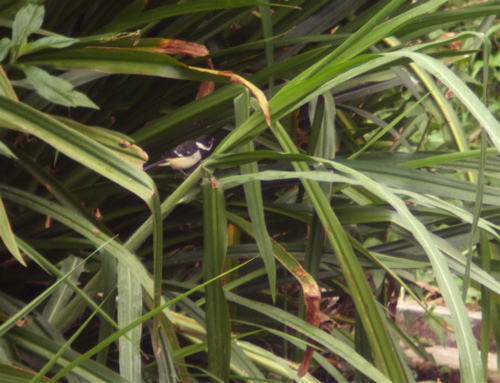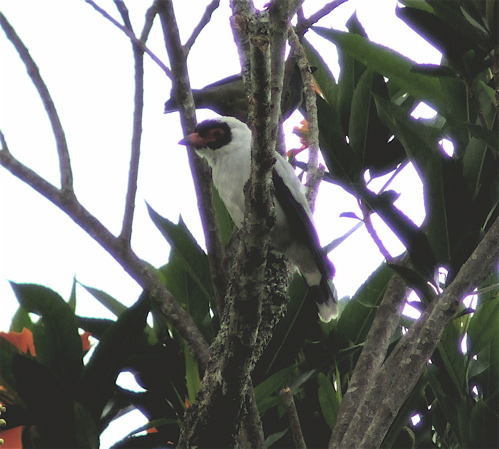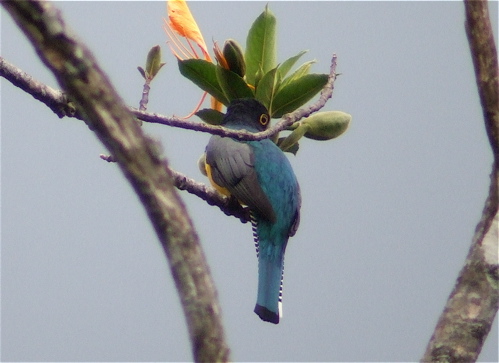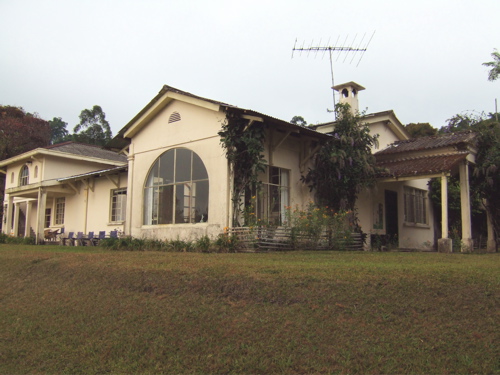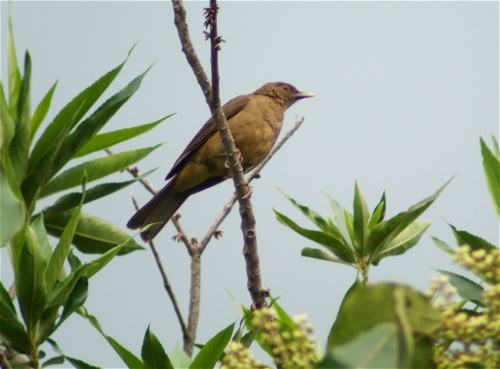 Why, hello there, Mr. Clay-colored thrush! I totally forgot about this photo I took of you at Los Andes in Guatemala!
Why, hello there, Mr. Clay-colored thrush! I totally forgot about this photo I took of you at Los Andes in Guatemala!
While working on another project, I discovered a huge backlog of blog posts--I have parts of Guatemala that I haven't blogged about yet--one of them was my absolute favorite lodge we visited. Doing some real digging in my photos, I have entries from last year's Rio Grande Valley Bird Festival--doh! So, we're going to catch up on a few spots as well as talk about Kazakhstan over the next week.
If I ever have the chance to return to Guatemala, I want to return to Los Andes Private Nature Reserve. It's a farm that supports 80 families and grows organic tea, shade-grown coffee and quinine. Surrounding the farm are several rubber tree plantations as well. Parts of it are left untouched and you can find quetzals there. The most common bird I saw while we were there was the yellow-winged tanager (above).
The lodge itself offered a cozy, family atmosphere. Comfortable couches, tons of books, info on the rich family history--an even Internet access. I was able to use Skype here to call Non Birding Bill free over the Internet. Dinners were family style and prepared on premises. You knew when each meal was almost ready, you could hear the cooks in the kitchen patting out the homemade tortillas. Olga, the owner, was quick to offer us samples of their own coffee and tea. She even made us fresh chai--what heaven to drink those beverages while slowly meandering around outside the house...
...and watching dynomite birds like socail flycatcher and red-legged honeycreeper. I could easily spend two weeks at this place. If I ever write a birding romance novel, I would set it here.
There were some familiar sites, like tons of monarch caterpillars. I've read that there are six generations of monarchs in a year. Since it was February, I wondered if this was the first generation after the one that over-winters?
There were also quite a few great kiskadees around--a bird I see quite a bit in south Texas. They look very similar to the social flycather. Note the large heavy bill on the above kiskadee.
Note the smaller dainty bill on the social flycatcher. The also sound quite different. The kiskadee seems to shout, "kisk ka DEE!" Here's a social flycatcher singing:
[youtube]http://www.youtube.com/watch?v=Tb91w3TDeEc[/youtube]
Almost like the kid brother of the kiskadee trying really hard, but comes off a tad whiny. Cute birds and a treat to watch while sipping organic tea.
This is a holding pond on the property and it was chock full of birds, again some familiar like indigo and painted buntings. So exciting to see where are breeding birds, party and hang out in the winter. I don't blame them for coming to Guatemala at all--beautiful and lots of seeds and insects to eat (Los Andes also have sunscreen and insect repellent ready to grab at a moment's notice). There was even a great-tailed grackle hunting and eating small lizards around the water.
This is a white-collard seedeater lurking in some of the grasses.
Check out this crazy looking bird! It's called a masked tityra. Follow this link for a better photo of one, so you can really see how striking this bird looks. I think there are some issues as to where this bird belongs in field guides. It used to be considered a tyrant flycatcher (those are the classy, somewhat easy to id flycatchers like kiskadees and scissor-tailed flycatchers, not the mind-numbingly hard to id empidonax flycatchers--incidentally, those are not all the same bird in that linked photo). However, there still seems to be some debate as to where it belongs, how to call that category and what other birds would fit in there. Bottom line, it's a crazy looking bird.
I saw many types of trogons while in Guatemala, but getting photos of them proved more challenging that i realized. Above is the beautiful backside of a violaceous trogon, perched in a tree right outside the lodge. We did explore other parts of the reserve and that is in a coming post. However, if you are looking for a place to do some relaxing birding, eat great local food, drink tea and coffee that is good for birds, and just visit with good people--Los Andes is it. Don't get me wrong, you can do hardcore birding and there are some strenuous trails here, but it was just such a joy to slowly work around the lodge itself and soak in so many colorful birds.
Even when it rained, you could stand at the window and enjoy the view.
More on the wonders of Los Andes later.

